Rozelle
A Quaint Little
Railway Station in Sri Lanka
By
Gyan
C A Fernando
with a cartoon by N Senthilkumaran
Thanks to Station Master Hemalal Vidyaratne for the cup of tea
with a cartoon by N Senthilkumaran
Thanks to Station Master Hemalal Vidyaratne for the cup of tea
Amongst
the railway stations on the Up Country Line of the Sri Lankan Government
Railway are a number of little known Colonial-built and Colonial-style quaint
railway stations.
The romantic sounding Rozelle is one of them.
Very
little is known of how this station came to be, although one assumes it had to
do with the tea plantations.
The
Name Rozelle
Even
the English spelling of the name is not established as far as this station
goes, and varies between Rozell e and Rozell a.
The latter reflects the present
day pronunciation of the name.
Most
English speakers would pronounce Rozelle as “Ro-zell” (two syllables) but the
Sinhalese characters spell it out as “Ro-sall-a” (three syllables).
Rozelle
is a Scottish name associated with Ayrshire. (There is also a Rozelle in New
South Wales in Australia.)
 In
Sinhala, which is a phonetic language, the spelling and the pronunciation of
“Ro sall er” are clear and consistent but one cannot help thinking that, over
time, the original pronunciation (and therefore the Sinhala spelling) has been
“Sinhalicised”.
In
Sinhala, which is a phonetic language, the spelling and the pronunciation of
“Ro sall er” are clear and consistent but one cannot help thinking that, over
time, the original pronunciation (and therefore the Sinhala spelling) has been
“Sinhalicised”.Officially, the station sign and the railway tickets use the first spelling but the rather recent official SLGR website lists it as Rosella, further confusing the issue!
There
is no town by that name in Sri Lanka and the name seems to come from the tea
plantation which is, confusingly, named Rozella.(continued.....click link below)
6°
56' 6.00" N 80° 33' 30.12" E
Situated
between Watawala and Hatton at an elevation of 1130m, 168 Km from Colombo and
124Km from Badulla, the station is in an exposed and wind-swept situation
facing a deep valley. A picturesque cascade falls into the valley below from a
point close to the station, and this powers the hydro electric
generator for the station.
Incidentally, this area has the highest rainfall figure of Sri Lanka.
Incidentally, this area has the highest rainfall figure of Sri Lanka.
The
main access to Rozelle station is by train although the Station Road does
connect with the main Colombo-Hatton road. Buses from nearby Hatton are
infrequent.
There is no town or even a proper settlement apart from the tea
plantations. Apart from a tea shack next to the Goods Shed, there are no other
facilities for the infrequent visitor.
Track
work and Gradients
The
single railway track approaches the station in the “Up” direction through a
very tight 51/2 chains radius double or S curve with a gradient of 1:44.
The
maximum gradient on the present day Sri Lankan railway is 1:44. The gradient
marker (above) is close to the outer Home Signal in the Up direction and on the
S curve.
The
curve is prone to earth slips and the track has had to be modified many times
in the past. (The author remembers seeing earth slip damage and construction
work going on circa 1977 whilst traveling on the Night Mail train)
At
one time, following an earth slip, the curvature of the track had to be reduced
to 41/2 chains. This was later corrected by reconstructing the earthworks
(David Hyatt in RSL supplements).
Although
now dismantled, the course of the old track is still visible on the first
curve.
The overgrown grass does not allow a good photo at ground level. The
Google Earth maps show the layout, the curves and the course of the old curve.
There
is a short passing loop which is not long enough to allow two Night Mail trains
to cross.
Although there are two platforms now, as such, there is no connecting bridge.
A
small siding leads back from the “Up” side of the station to the old Goods Shed
but both the siding and the shed are rarely used these days.
As is normal on
the Up Country Line, there are catch points at the downgrade end of the station.
Until
recently there was no mains electricity but now a small hydro electric
generator, situated in the valley below, provides power.
The hydro generator
was built by the railway engineering department using scrap material.
The
old platform lamp hooks can still be seen.
Train
Operations
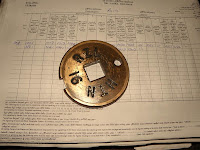 As
is the norm on this stretch of the line, signals are of the mechanical,
semaphore type and single line working is achieved by means of the Tyer token
or “tablet” system.
As
is the norm on this stretch of the line, signals are of the mechanical,
semaphore type and single line working is achieved by means of the Tyer token
or “tablet” system.
A
curious feature, not seen anywhere else on the Sri Lankan railway, is the
“Train Indicator Bars”.
These
are bars running parallel to the rails in a short section of the track in the
station.
When a train occupies this section of the track the bars cannot be moved and, as a result of an interlocking system, the signal levers cannot be operated, thereby preventing another train getting on to the same track.
When a train occupies this section of the track the bars cannot be moved and, as a result of an interlocking system, the signal levers cannot be operated, thereby preventing another train getting on to the same track.
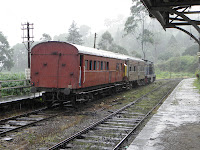 A
number of short local “Baby Trains” ply this stretch of the railway and it goes
without saying that very short trains need to make sure that they stop in this
section of track. (To be continued)
A
number of short local “Baby Trains” ply this stretch of the railway and it goes
without saying that very short trains need to make sure that they stop in this
section of track. (To be continued)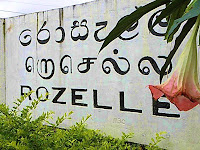

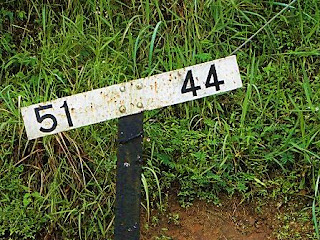

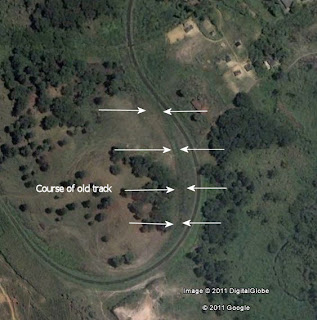






Nicely written article. Really enjoyed. Hope to have a visit there soon.
ReplyDeleteThanks and do come back!
DeleteGyan
Nice Article Mr Gyan!!
ReplyDeleteThanks and do come back!
DeleteBrilliant! Thanks for shining a light on this legacy.
ReplyDeleteChris
Switzerland
...thank you for valuable facts.
ReplyDeleteNicely written.. can we publish the article on our travel magazine colombo things to do with credits to you.. cc mail to thingstodocolombo@gmail.com
ReplyDeleteThanks! Yes you can publish it. Regards!
Delete